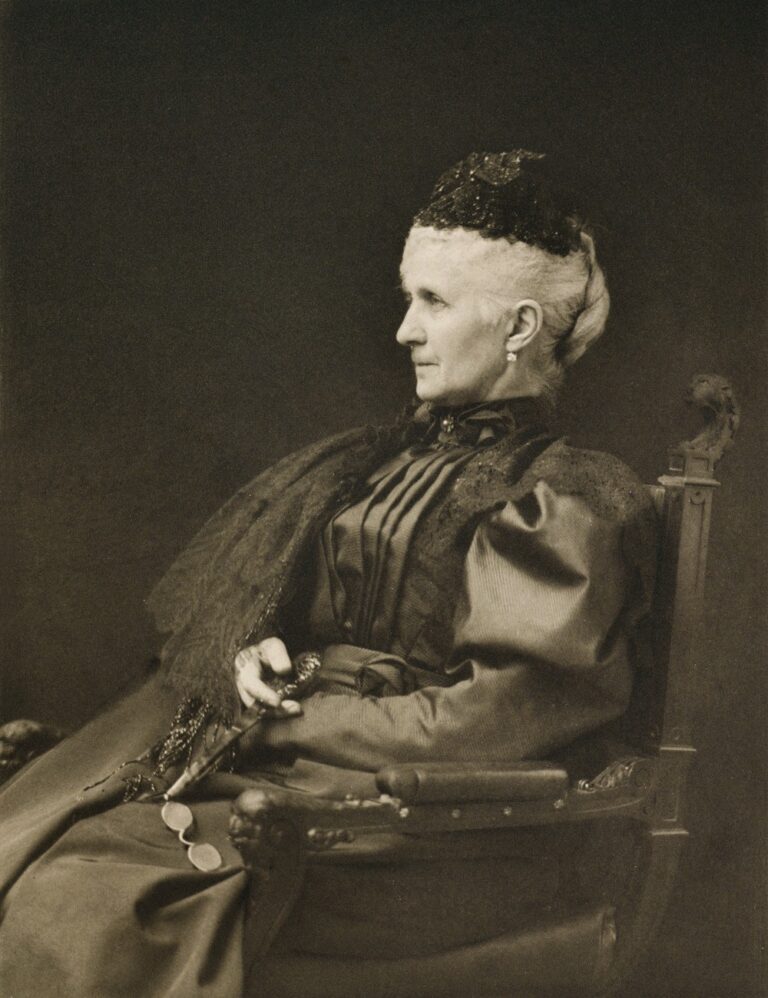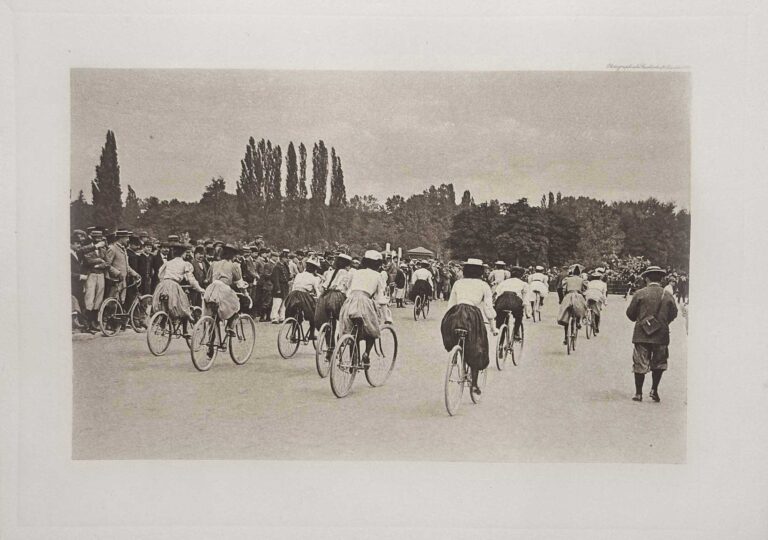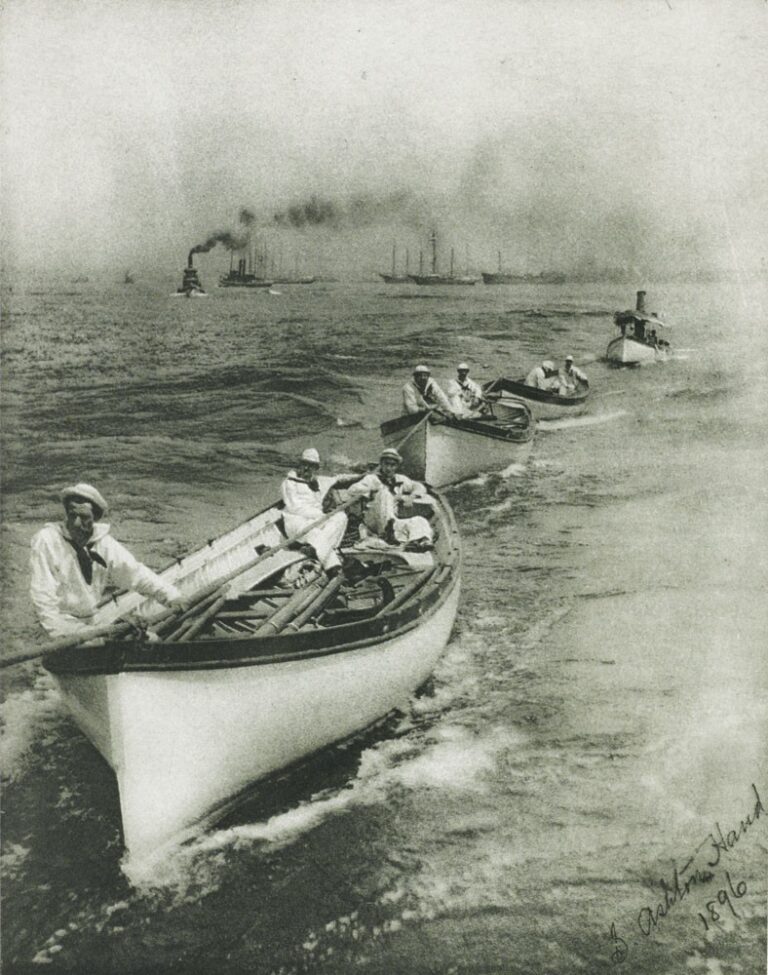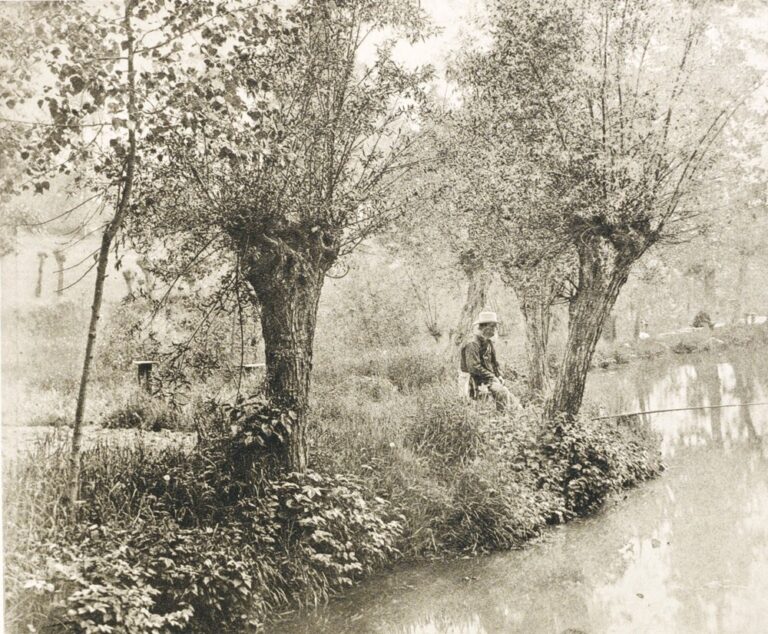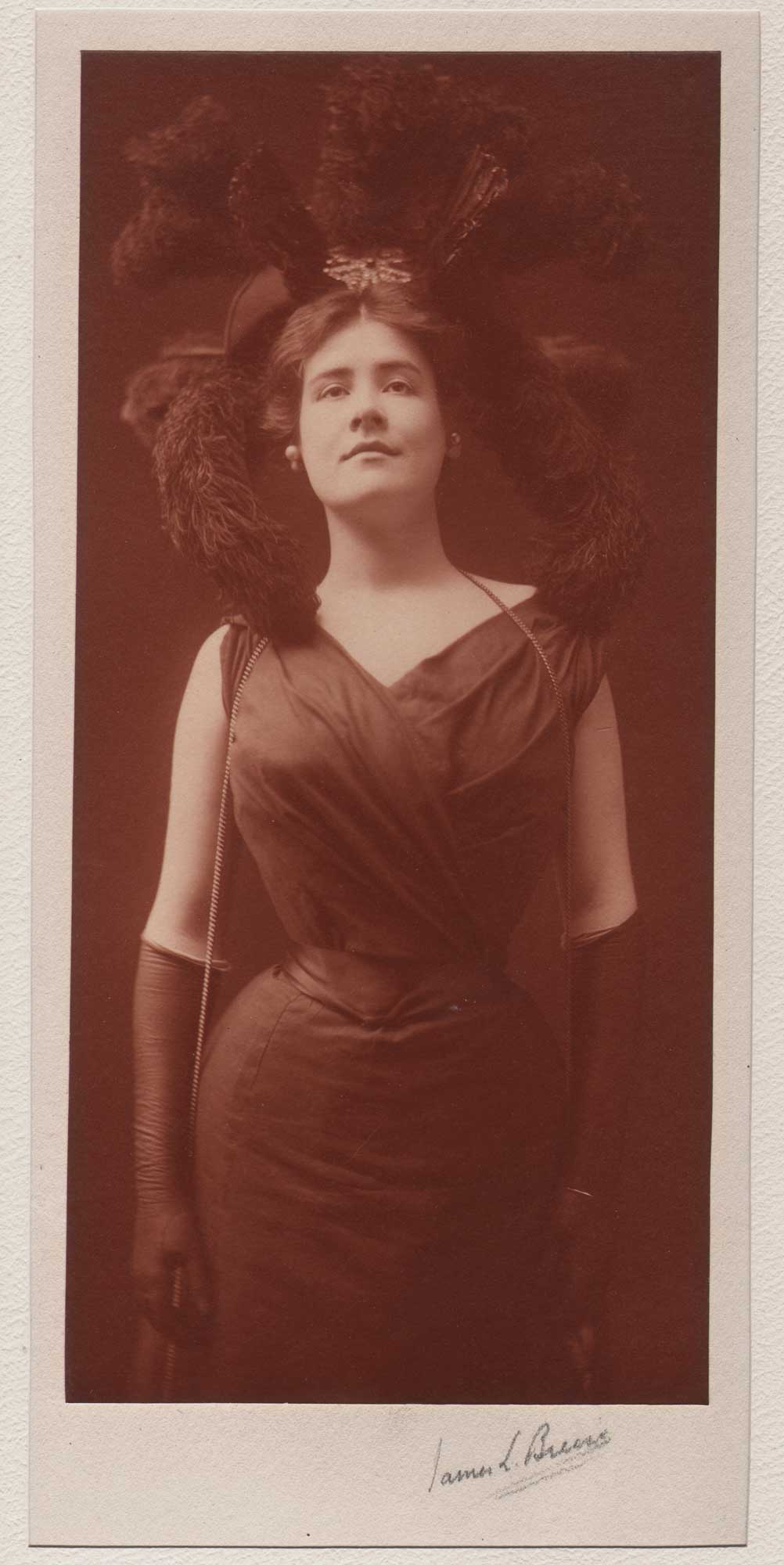
New York Socialite “Baby Belle” Neilson
Miss Mary Isabelle Neilson, known in society as “Baby Belle,” Is a tall, handsome young woman. She made her début in New York society In 1896. (1.)
When “Baby Belle” Neilson attended the “One of the 1001 Nights” costume party held at James Breese’s Carbon Studio and townhouse in New York City on December 17, 1896 she had turned 19 years of age the month before. “Baby Belle”, wearing this magnificent plumed hat, is known to have been photographed by Breese at the party using “flashlight”. (most likely magnesium powder) Another group photograph included with the album shows her wearing the same outfit. Besides this Breese-autographed portrait, the album itself was inscribed by the photographer to her as Mrs. Arthur T. Kemp the following year- sometime after April, 1897- when it was presented or mailed to her. (Mary Isabelle Neilson Hunnewell: 1878-1924) (Neilson would marry Arthur Tryon Kemp, a wealthy New York City property owner and 1894 graduate of Yale, in late April, 1897.) The marriage ended in divorce in 1903.
- Excerpt: Mrs. Kemp Again a Bride: The New York Times, November 28, 1903
James Lawrence Breese: 1854-1934
James Lawrence Breese, a stockbroker by profession, owned and operated The Carbon Studio, located on the ground floor of his townhouse at 5 West 16th street in New York City in partnership with American photographer Rudolf Eickemeyer Jr. Breese, a member of New York Society himself, specialized in Society portraiture as well as the copying of artwork.
The following biography of Breese is courtesy of his great great grandson Mark Sink, a noted American photographer based in Denver, CO. Mark maintains a blog on Breese and extended family here.
James L. Breese and the Carbon Studio NYC
He was James L. Breese, best friend of architect Stanford White who did design work for both his New York townhouse and studio at 5 West 16th street and his Southampton country estate (both still standing). He was the nephew of the portrait artist, inventor of the telegraph and co-founder of the National Academy of Design, Samuel Finley Breese Morse (aka “The father of American Photography”). He was a leading light in New York’s turn-of-the-century social and artistic upper crust. James L. Breese owned and operated the Carbon Studio in partnership with pictorialist Rudolf Eickemeyer Jr., who later became a member of Alfred Stieglitz’s The Photo Secession and The Linked Ring. Breese’s then famous “One of 1001 Nights” salons would begin at midnight, at 5 West 16th, “at the foot of women’s mile.”Artists, writers and society secretly gathered for lascivious intrigue. The documented and published highlights were dresses catching fire to be extinguished with champagne, “The Pie Girl Dinner”, a naked sixteen year old girl to popping out of a pie, and “the girl in the red velvet swing.” His circle of bohemian friends and guests included such remarkable personalities as Miss Emily Hoffman, the mother of Diana Vreeland, (Charles) Dana Gibson, Louis Saint Gaudens, John Singer Sargent, Nicola Tesla, Otho Cushing, Miss Post, the Parsons, the DeForests, Evelyn Nesbit and many more. Together they staged elaborate historical party tableaux which Breese photographed for his private amusement. He was the founder and an active member of the NY Camera Club, won many awards, and was cataloged in Camera Notes many times. He and Stieglitz were the only two Americans (out of sixty American applicants) to be accepted in an exhibition in Vienna 1893, (1891-editor) which Breese took first prize. He wrote and illustrated articles for Cosmopolitan (1894), one titled The Relationship Of Photography To Art. He was heavily chronicled and his exhibitions reviewed during his day. The most noted was by critic Edward L. Wilson, who wrote of Breese and his work, “true and interesting picture qualities” and, “the leader of New York’s new school.” Another review by Sadakichi Hartman gushes about Breese and pans Steiglitz. Like so many of his contemporaries very little is known about him today. The well known historians, William Welling, Christian A. Peterson and the director of the National Portrait Gallery, Mary Panzer, have all made generous entries about Breese in their historical texts and publications of the period and they all agree there is much more to be unearthed and brought to light about this bohemian group that called themselves “The Carbonites”.
✻ ✻ ✻ ✻ ✻
One of perhaps only 50-70 copies produced, with almost all believed to be either lost or destroyed, this rare mammoth album of original carbon photographs, including of artwork produced by notable artists and an original multi-color lithograph, was compiled by amateur photographer James Lawrence Breese in early 1897. An important and historical photographic and artistic record of America’s Gilded Age, it was produced as a lavish “souvenir” album of a gathering of 70 invitees of the New York City elite, including members of The Four Hundred. The occasion was a costume party at the photographer’s “Carbon Studio” and townhouse at midnight on December 17, 1896.
The album contains ten carbon prints, laid down on oversized cards and individually matted, all with Breese’s “The Carbon Studio” blindstamp, and an original lithograph of the party’s “menu” printed in colors by American artist Robert Lewis Reid. (1862-1929)
